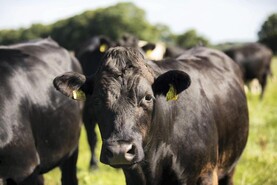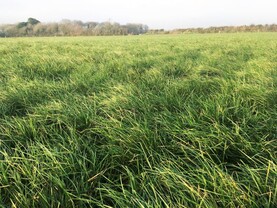I was at two events over the past week that hammered home the importance of having a good herd of cows when it comes to making good money from dairy farming. In 2004, the Ballyhaise herd had an EBI of €-16. Today, it has an EBI of €139 and net profit per hectare has more than trebled in the same time.
At the Dairylink walk featuring Kevin McGrade’s autumn-calving herd in Co Tyrone, Kevin said his fat and protein in 2000 was 3.6% and 3.1%, respectively. Today, it is 4.72% and 3.64%, respectively, with milk volume more or less the same.
To get the change, Ballyhaise implemented an intensive culling policy based on fertility. Almost 40% of cows in calve after 12 weeks were culled. They then brought in high EBI replacements and bred from these.
In Tyrone, Kevin used milk recording data to only breed replacements from high fat and protein cows and used high EBI bulls on these cows. The rate of change was faster at Ballyhaise, but both farms are in good places now.
Donagh Berry of Teagasc says it will take 10 years for the national average herd to be at the same EBI as the top 10% of herds today, presuming only high EBI bulls are used. But in 10 years’ time, the top herds will probably still be 10 years ahead, unless genetic progress stalls.
Strategy
Is it better for low EBI herds to breed out of inferiority, or instead buy their way out of it? A few years ago, you would have said breeding is the best strategy as sourcing good-quality replacement heifers was very difficult and there were big question marks around disease risks.
But things have changed and because high EBI herds are way more fertile now, they are generating surplus heifer calves. For some of these dairy farmers, surplus heifers are a nuisance. If they get locked up with TB or can’t get buyers, they are stuck with them. More high EBI herd owners are just breeding to dairy for three or four weeks and then switching to beef AI and selling high-value beef calves instead of taking risks with selling dairy heifer calves.
So farmers with very good genetics are effectively spoiling their genetics by using beef bulls, while half the farmers in the country with below average EBI are chasing a moving train trying to get their fat and protein and fertility to improve.
By right, it is these farmers who should be using the beef bulls and the farmers with the good cows should be breeding heifers and selling them to the farmers that need them. But for this to happen, the farmers breeding the heifers need to be guaranteed a sale at a price that makes sense and the buyers need to be guaranteed that they can buy good stock at a reasonable price.
Patrick Heffernan and his father Pat are milking 70 cows outside Littleton, Co Tipperary. Their herd EBI is €105 and in 2017 they sold 465kg of milk solids per cow with an average of 3.63% protein and 4.28%. This is good performance, but the Heffernans are striving for better.
So, last year, they signed an agreement with Mark Cassidy from Co Meath to buy 20 AI-bred and high EBI heifer calves. Patrick and Mark were put in touch by their consultant Matt Ryan. The EBI of the heifers is €201 on average and the PD for fat and protein is 0.24% and 0.15%, respectively. This means the heifers should produce 4.68% fat and 3.87% protein – a significant jump on the Heffernans’ current herd average.
Now, I only use enough dairy AI for my own needs and for however many Pat needs and use beef bulls on the rest. It’s a great job
The number of calves, their EBI, the price and the date that they were to move was all agreed this time last year, before the start of the breeding season. Basically, Mark used 50 extra dairy AI straws to generate the 20 heifer calves that the Heffernans wanted.
“I used to sell surplus heifer calves before but invariably I’d end up selling calves for €200 that were almost reared which cost me money.
‘‘Now, I only use enough dairy AI for my own needs and for however many Pat needs and use beef bulls on the rest. It’s a great job,” Mark says.
For the Heffernans, it means they can use all beef AI and stock bulls across their herd increasing the value of their calves. But the real win is getting heifer calves on the ground from top-performing cows at an agreed price and from a herd with a high health status.
Even if it costs the farmer buying the calves more money, it is money well spent. Because these heifers will produce more valuable milk, the return on investment is huge.
Haylage imports and €30 discount on fodder stretcher – Aurivo






 This is a subscriber-only article
This is a subscriber-only article










SHARING OPTIONS: